

“In vino veritas, (in wine, truth)”
― Pliny the Elder
As we approached the end of the second millennium, huge growth in wine production in some countries saw a sort of industrialization of grape growing, of the farming of grapes: hand picking, hand pruning, hand tending was out and mechanization, irrigation and the use of chemicals was in. Large companies were swallowing up small, family-owned wineries and in some instances closing them down to have the label produced at large ‘wine refineries’ or ‘tank farms’ as became their derided nick-names.


Eventually, the markets became disillusioned and areas of the industry began -to some extent- to see the error of its ways.
Many smaller and family owned producers reverted to organic and biodynamic practices and principles in their vineyards, looking for a sustainable agricultural balance with their environment. This approach soon found favour with a market threatened by genetically modified foods, climate change and food security and people voted with their wallets.
For a time, the international show circuit seemed to have too much influence on winemaker’s thinking, the formulas for making gold medal and trophy winning wines seemed to be all that mattered and not individual expressions of flavour and local terroir. Soon, wines started to taste like they had been made in a test tube instead of a fermenter, the product of a laboratory instead of a winery. Perhaps worst of all, they all seemed to taste pretty much the same, lacking individual expression and complexity, lacking any personality, their own character, the market soon found them to be expressionless wines with nothing to say and decidedly uninteresting to drink.
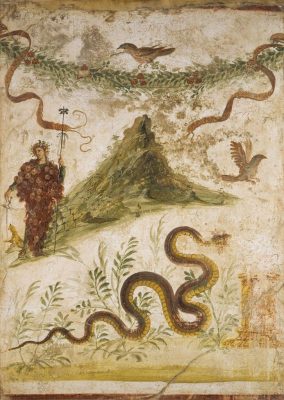

The backlash came from an emerging generation of young winemakers and sommeliers eager to be heard over the dull drone of formulaic and industrial winemaking, they wanted to be recognized in their own rite and were ready to rebel. The young tyros began to look back to see where it all started to go off the rails, firstly through the decades and then the centuries.
They didn’t stop until they have gone back over two Millennium, back to Ancient Rome, Ancient Greece and all the way back to Georgia, Armenia and to the very birth of winemaking, over six thousand years ago.
The world’s oldest known winery was discovered in Armenia (c. 4100 BC) first discovered by archaeologists Gregory Areshian and Boris Gasparyan in 2000 at a site known as the Areni-1 cave complex.
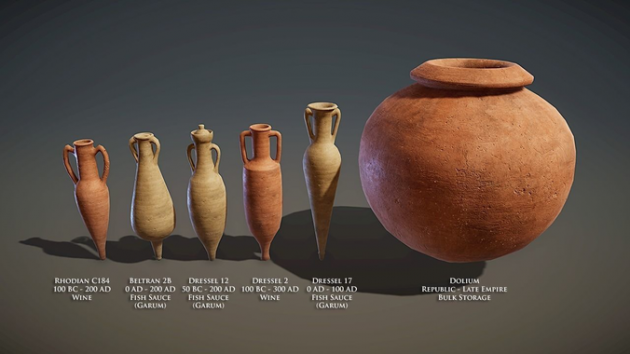

The altered consciousness produced by wine has always been considered divine/religious with the Ancient Greeks worshipping Dionysus, the god of wine and the Romans in turn knew him as Bacchus.
It was consumed with meals and at parties, regarded as a source of good conversation and extolled in poems and songs.
For the Ancient Romans, wine was an everyday drink, celebrated as a divine gift with priests, monks and nuns growing grapes and producing highly prized wines. Grapes grew wild over much of the land; the Etruscans are known to have harvest grapes for winemaking in the north of what has become modern Italy and the Ancient Greeks in the south. Winemaking was a very natural process with the enzymes of the wild yeasts that collected on the skins of the grapes fermenting, breaking down the sugars and turning them into alcohol.
It was advances in the cultivation of grapes and technological advances in the production of wine that made Roman wine the finest of the era and the advance of the Roman Empire into France, Germany, Portugal and Spain spread the development and improvement of the ‘industry of wine’ throughout Europe.
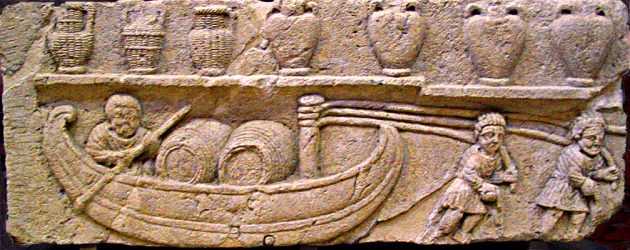

Wines were often stored for years in ceramic amphorae and were eventually labeled with vintage and vineyard, they would sometimes have additions like honey, herbs or tree resins, this was probably done to try and preserve the wines as well as improve their taste.
The Ancient Greek physician, Galen regarded honey wine (known as Massilitanum) as delightful and good for one’s health. He also wrote of being at parties were wine was sprinkled with euphrosynum “the plant of cheers” or, hiera botane “the sacred plant” to keep the conservation going and keep spirits high.
Pliny the Elder enjoyed a dry white wine known as ‘Turricuar’ which was spiked with a little seawater and recommended with oysters and fish, in his ‘recipe’ for the wine Lucius Columelle described it as being yellow in colour and tasting slightly of prunes.


Undoubtedly the most famous of all the Ancient Roman wines was a wine made from grapes grown midway up the slopes of Mount Massico, known as ‘Falernian Wine’, a wine that was so sought after, celebrated and expensive that at least one Roman boasted of drinking it on his tombstone: “In the grave I lie. Who was once well known as Primus. I lived on Lucrine oysters, often drank Falernian wines. The pleasures of bathing, wine and love gave me over the years.”
Grown near present day Naples, Falernian wine was a white wine aged for many years in large clay amphorae, sometimes for decades. It was oxidized to the point of being the colour of amber and it was recorded that a 160-year-old Falernian was once served to the Emperor of Rome in crystal goblets. Varro wrote of Falernian wine increasing in value as it aged.
Falernian wine was known to be relatively high in Alcohol, Pliny the Elder wrote of it being the only wine to ‘take light when a flame is applied to it’. The wine was harvested very late in the season, rich in sugars like a modern dessert or even ice wine and was left to age in clay for an average fifteen to twenty years.
In the ruins of Pompei a price list of sorts was discovered on the wall of an inn:
For one “as” you can drink wine
For two you can drink the best
For four you can drink Falernian.
Although several historians have suggested that given the type of establishment and the inexpensive price, this Falernian was almost certainly a fake!


Horace and Catullus wrote of Falernian wine in their poetry whilst Petronius wrote of it in the ‘Satyricon’. Falernian wine was the wine of gods, emperors and the wealthy classes of Ancient Rome, in such demand was the wine that in AD 180 the physician and gourmand Galen openly doubted that all of the wine for sale as Falernian could possibly be the real thing, wine fraud it seems was alive and well in Ancient Rome. Falernian wine was one of the first wines exported from Europe to Britain whilst the latter was governed by Rome.
For much of Roman history it was Greek wines that were the most highly prized and the ‘local’ Roman stuff was cheaper and considered inferior. However, the second century saw the arrival of what has been described as the golden age of Roman wine, a period when Rome controlled most of the Mediterranean world. The era led to the famous vintage of 121 B.C. known as the ‘Opimian Vintage’ named for the Roman Consul, Lucius Opimius.
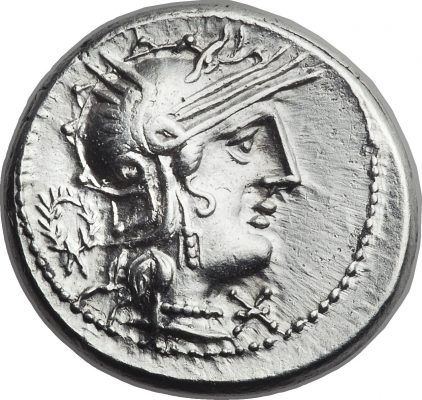

There are numerous writings on the famous Falernian wine of 121 B.C. a vintage renowned for its quality perhaps above any other and accounts exist of it being served a century later, (although it was suggested at the time that it may have been well passed its optimum drinking time).
Legend has it that the Roman farmer Falernus was a humble man who tilled the soils on his patch of Mount Massico when one day he was visited by Bacchus, the god of wine and agriculture. Falernus, who did not recognize Bacchus prepared a simple meal for the god and showed him kind hospitality, in returned the god caused the cups on the table to fill with wine. The next day, when a hazy and hungover Falernus awoke Bacchus had gone but he had left the entire mountain covered by a canopy of healthy grape vines.
Falernian wine was produced from grapes grown in three vineyards on Mount Massico, with many ‘domaines’ having claim to vines or parcels of fruit from these vineyards. The best fruit was said to come from midway up the mountain and this was for a time owned by a gentleman names Faustus.
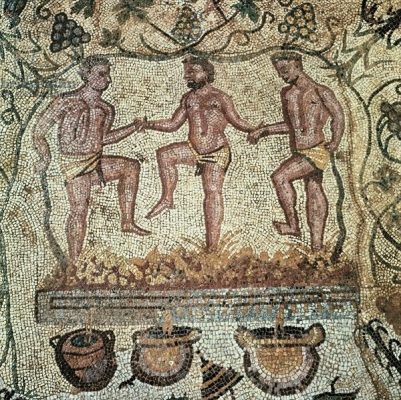

Pliny the Elder wrote of three types of Falernian calling then the ‘rough, the sweet and the thin, whilst other writings suggest the late harvested white wine was the most popular. Falernian wine was known to be regarded as one of Rome’s finest and most popular wines for at least 500 years and remained the favourite wine of senators, emperors, generals and statesman.
One person not so enamored with Falernian wine was the Stoic Marcus Aurelius, Emperor of Rome from 161 to 180 AD, who in his Meditations said that: “For after all, Falernian wine is just juice from a bunch of grapes.”
According to the excellent research done by learned wine researchers and writers like Jancis Robinson in her Oxford Companion to Wine and Hugh Johnson across various publications, we know that Roman historians like Pliny the Elder, Cato, Columella, Horace, Palladius, Varro and Virgil left many writings on grape growing and wine; giving us a clear picture of the role of wine within Roman society and viticulture during the time of the Roman Empire.
Marcus Porcius Cato was a Roman statesman raised on a farm in the northeast of Rome. He wrote in detail on viticulture and winemaking and his manual was fervently followed, becoming the standard textbook of Roman winemaking for centuries.
Lucius Junius Moderatus Columella was perhaps the most important writer on agriculture of the Roman Empire, he was a 1st Century AD writer whose 12-volume De Re Rustica is considered the most comprehensive work of its time. Eleven volumes written in prose with Volumes 3 and 4 devoted to the technical aspects of Roman viticulture, including advice on which soil types yield the best wine, whilst Volume 12 concerns various aspects of winemaking.
Columella presented precise details vineyard management and described modern elements of vine training and trellising. He also describes some of the wines of Roman provinces, noting the potential of wines from Spain and the Bordeaux region.
Pliny the Elder, (AD 23 – AD 79) was a was a natural philosopher, naval commander and author of the 37-volume encyclopaedia Naturalis Historia (Natural History), dedicated to the Emperor Titus. The tome was published after Pliny’s death near Pompeii following the eruption of Mount Vesuvius, the work includes significant discourse on viticulture and wine.
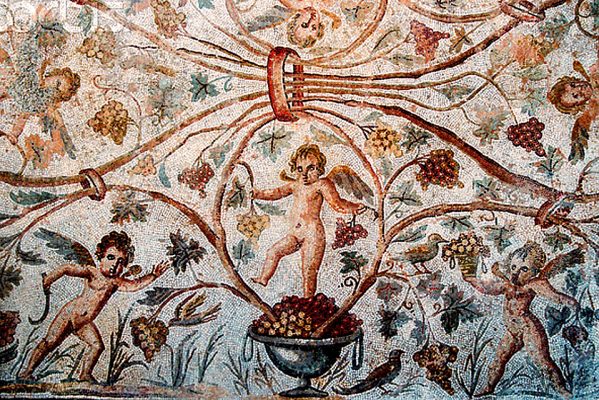

Book 14 includes a ranking of the “first growths” of Rome, whilst book 17 includes a discussion on various viticultural techniques and an early formalization of the concept of terroir. In his rankings of the best Roman wines, Pliny concludes that the vineyard has more influence on the resulting quality of wine than the particular vine. Sections of Book 23 also outline some of the various medicinal properties of wine.
Pliny is also the source of the most famous Latin quotation about wine: “In vino veritas,” or “In Wine, Truth”. It was Pliny the Elder who recorded that Falernian from the famed Opimian vintage of 121 BC was served at a banquet in 60 BC honoring Julius Caesar for his conquests in Spain.
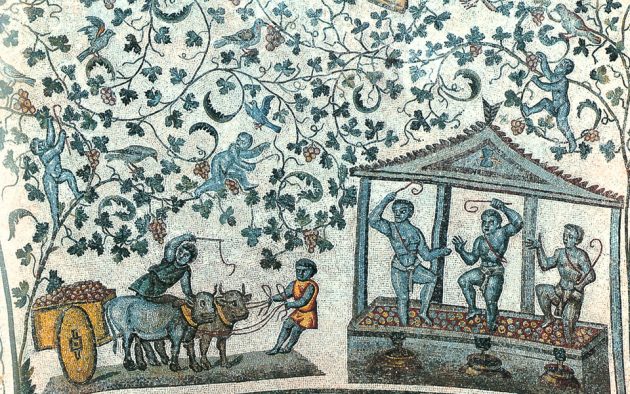

One of the most celebrated authors in history, Joseph Conrad, (1857–1924) wrote his first novel in 1895 at the age of thirty-eight, he had spent the previous twenty years at sea working on merchant ships. Author of some nineteen books and numerous essays; no less than half of his published works, including ‘Heart of Darkness’ and ‘Lord Jim’ are about sailing, sailors or the sea.
Polish by birth, Conrad spoke his native tongue and fluent French, he did not learn English until he was twenty, that he chose this new language as the one he would write in is quite extraordinary. English speakers are certainly thankful that he did, Conrad treated the language with a certain sensibility, pacing and richness, not previously seen in English literature to that time, when combined with his usual topics of discomforting morality and confronting truths the experience of reading Conrad can be both emotional and profound.
[Marlow]: “Imagine him here—the very end of the world, a sea the colour of lead, a sky the colour of smoke, a kind of ship about as rigid as a concertina – and going up this river with stores, or orders, or what you like. Sand-banks, marshes, forests, savages, precious little to eat fit for a civilized man, nothing but Thames water to drink. No Falernian wine here, no going ashore. Here and there a military camp lost in a wilderness, like a needle in a bundle of hay—cold, fog, tempests, disease, exile, and death – death skulking in the air, in the water, in the bush. They must have been dying like flies here.”
Heart of Darkness –Joseph Conrad


